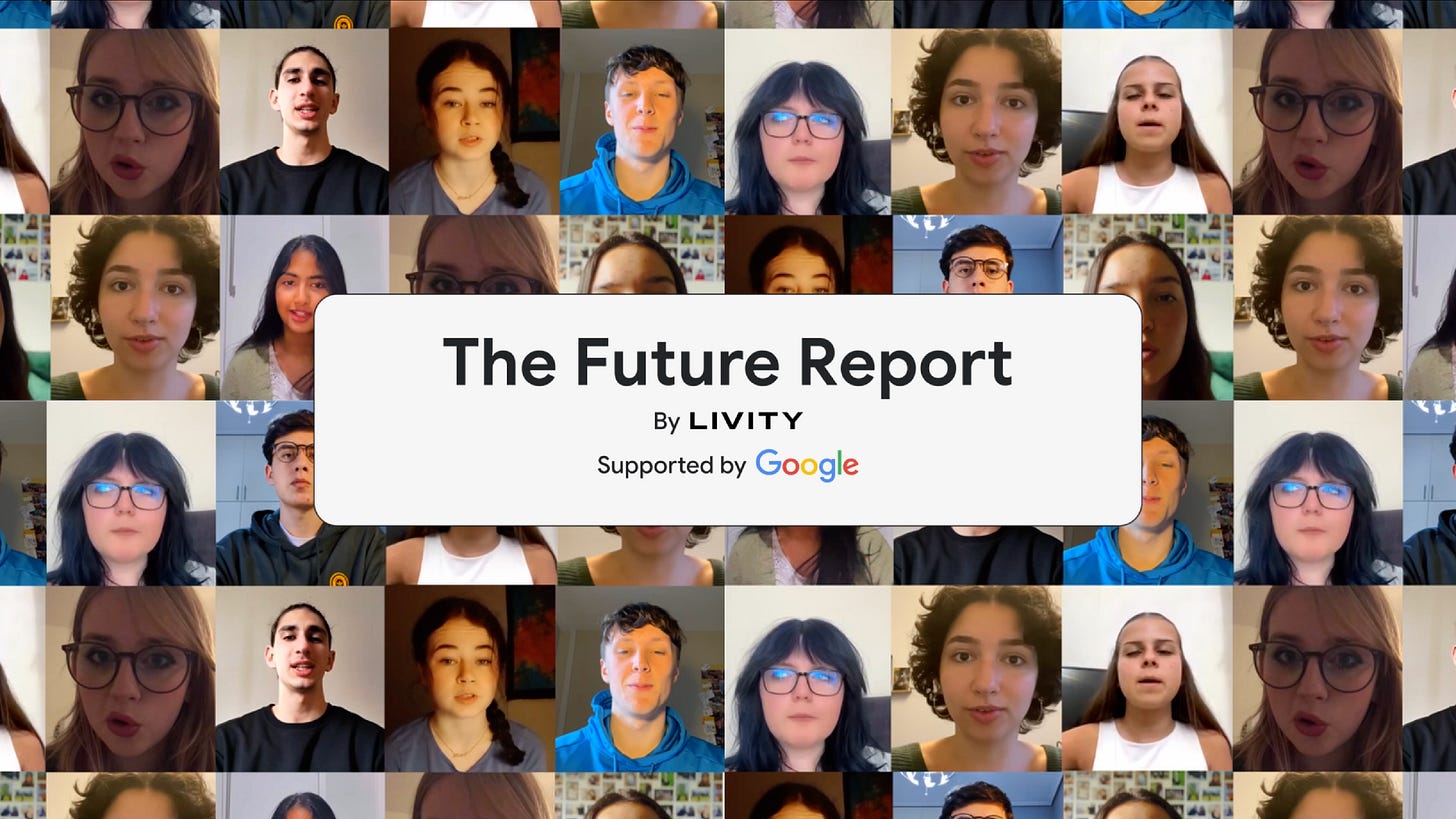Future Architects: Why We Produced The Future Report
At Livity, we’ve always believed young people don’t just represent the future, they should actively shape it. That belief has driven our work for years: creating spaces where youth voices aren’t just heard, but are championed, helping them to positively influence how the world evolves.
For over 15 years, our partnership with Google and YouTube - from the inception of their flagship programmes of Internet Legends and Internet Legends, through to YouTube Film School - has been founded on the commitment to elevate young people’s voices and experience as they use technology to shape a better, safer future.
The Future Report, is an evolution of this mission - a Europe-wide exploration of how teens are experiencing, questioning, and reimagining technology in their daily lives.
We listened to over 7,000 teens from seven countries, combining big data with deeper, creative conversations. We asked them about everything from AI and learning, to wellbeing, trust and digital balance.
Why is this important? Because the next ten years of European tech innovation will be shaped by the digital habits of this generation. They are at the centre of debates about technology, shaping the platforms and systems we all use. By listening directly to their voices, we uncover a roadmap for safer, more inclusive, and empowering digital experiences for everyone.
Top 3 highlights
1. Teens have diverse and evolving needs when it comes to technology
We talk about this a lot at Livity, but teens are not a single, uniform group. Their needs, behaviours, and relationships with technology evolve significantly between younger teens (13–15) and older teens (16–18), and are further shaped by individual and familial factors as well as their environment and the kinds of content to which they are exposed. Understanding and addressing these evolving needs is critical to creating positive, safe, and empowering digital experiences.
2. Teens view AI as a creative partner, not a replacement for their own creative thinking.
81% said AI tools have helped boost their creativity. For this generation, AI is a co-creator that sparks new ideas and helps them explore interests they might never have discovered otherwise. But they’re calling for schools and society to catch up because they want to learn how to use it more effectively and responsibly to support their own development. While acknowledging AI’s benefits, they are aware of its limitations. They highlight the need for critical thinking and tools to verify AI-generated information.
3. They want technology to be designed for human wellbeing
Across every country, teens told us they want tech that genuinely supports people — that protects users by default, encourages positive interactions, and promotes inclusion. As one participant from Poland said:
“Create digital spaces that foster healthy interactions, diverse perspectives, and constructive dialogue. Protect the most vulnerable, children, the elderly, and people in mental health crises – because they use these platforms too.… And if possible, default settings should be designed with people in mind – with built-in time limits that can be adjusted, but which ensure that an app isn’t harmful to someone who installs it without knowing how to use it properly”.
—
The Future Report gives us a powerful reminder that young people are already thinking deeply about the world we’re building with technology. They’re not just users, they’re future architects.



